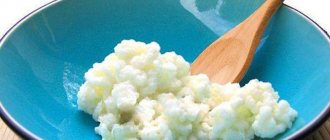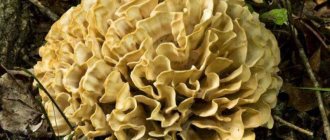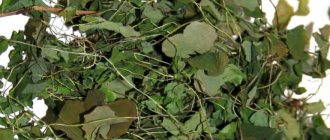It turns out you can sharpen knives with mushrooms! Of course, not everyone, but the birch tinder fungus is perfect for this. Indeed, hairdressers used to use it as fine sandpaper. They cut strips from the underside of the mushroom, dried them and, attaching them to a piece of wood, sharpened them using a razor device.
And these are not all the amazing properties of the birch tinder fungus. The name itself contains another useful feature of the mushroom - it can smolder for a long time and not fade. Thus, using the mushroom as tinder, people in ancient times could store and transfer fire over long distances.
But the birch tinder fungus is most valued not for its domestic use, and not for, frankly speaking, very dubious taste, but for its ability to treat an incredible number of ailments.
The use of birch polypore in folk medicine is a long-standing tradition. Mushroom infusions were popular, especially in Russia, the Baltic countries, Hungary and Romania for their nutritional and soothing properties. Polypore tea has been used against various types of cancer, as well as as an immunostimulant, antiparasitic, and remedy for gastrointestinal disorders. Antiseptic and decongestant dressings made from fresh tinder fungus were applied to the wounds, and powder obtained from dried mushrooms was used as a painkiller.
In 1991, a mummified male body was discovered on the Val Senales glacier in the Italian Alps. Scientists have determined that this man died approximately 5,300 years ago. Because the body was covered in snow and frozen into ice, it was surprisingly well preserved. A weapon, a bag of food and a first aid kit with various medicinal herbs, including pieces of birch polypore, which, according to modern scientists, he used to treat diseases, were found with him. Thus, we can safely say that the history of the use of tinder fungi for medicinal purposes goes back more than five thousand years.
Description and photo of birch polypore
Common names
Birch polypore or lat. Piptoporus betulinus is also called piptoporus birch or birch sponge, birch or wood (black) mushroom.
The fungus grows mainly as a saprophyte - on dead trees and, sometimes, as a parasite on living trees. Fruits from May to October. Birch tinder fungus is an annual mushroom that only sometimes persists until next year.
Fruiting body
The fruiting bodies of the birch sponge sometimes reach 30 centimeters in diameter, but are more often found smaller in size - from 5 to 20 centimeters. White when young, the caps gradually darken, changing their color to yellow-brown or grayish. They are covered with thin, smooth, sometimes with small cracks, skin, which can be easily separated from the cap. The caps themselves are initially cushion-shaped, then, as they mature, they take on the shape of a hoof, and at the end of life they look like a large flat bracket with a downward curved edge. The underside is white and contains many pores that release whitish fungal spores into the air.
Leg
Most tinder fungi do not have a leg, or it has a rudimentary, weakly defined form.
Pulp
It’s not for nothing that the mushroom is called a birch sponge. It is the inner part of the fruiting body that looks like a very dense white sponge. In young tinder fungi it is soft, juicy and uniform, in mature ones it is hardened and cracked.
Edibility
Birch tinder fungus can be considered a non-poisonous and edible mushroom. But if its non-toxicity is a proven and obvious fact, then its edibility is a debatable topic. The fact is that the mushroom has a rather bitter aftertaste. Eating tinder is not very pleasant. But taking it as a medicine is quite digestible.
When to collect and how to process:
You should only collect mushrooms that have a white bottom. Collect the mushroom from young birch trees; if the mushroom has black and brown spots, it is not recommended to use it. Can be collected all year round. The best season is between September and December because during this time it develops new fruiting bodies.
We recommend: How to distinguish an edible mushroom from an inedible one
In folk medicine, the mushroom is used fresh and dry. To dry it, simply cut it into small cubes or slices and simply dry it naturally. When dry, it can be stored for many years.
(Pictured is an old tinder fungus, not suitable for medical use, but excellent for driving away mosquitoes, illustration to demonstrate cutting for drying)
Share link:
Chemical composition
A comprehensive analysis of the chemical composition of birch polypore revealed the presence of 17 fatty acids, including oleic and linoleic, as well as substances with antioxidant properties: ascorbic acid, beta-carotene and lycopene. Other compounds identified included betulinic acid, betulin, lupeol, fomephycic acid and ergosterol peroxide.
Medicinal properties of black wood mushroom
Modern pharmacological studies have confirmed the effectiveness of using birch polypore for the treatment of many diseases. Without a doubt, this medicinal mushroom can be considered as a promising source for the development of new healthcare products.
Currently it is used as:
- Antiviral agent
In experiments, birch sponge extract blocked the proliferation of HIV cells, attacked and destroyed encephalitis infections, and was effective in treating influenza, yellow fever, and West Nile fever.
- Antimicrobial agent
Birch polypore contains the antibiotic piptamine, which is used to treat diseases caused by E. coli.
- Anti-inflammatory
Currently, the effect of triterpene acids contained in mushrooms on the course of chronic inflammation has been studied. It has been established that these substances prevent the development of inflammatory reactions.
- Antitumor agent
Betulinic acid and other chemicals in mushrooms have been shown to cause the destruction of cancer cells, but do not have a negative effect on healthy cells.
- Antiseptic
Products based on birch sponge are successfully used to treat wounds and inflammation. By cutting a thin strip from the underside of the mushroom, you can get an excellent self-adhesive antiseptic plaster, much better quality than that purchased at the pharmacy.
- Antifungal agent
The polypore does not like to share its habitat with other fungi and, therefore, contains some substances that have a strong antifungal effect.
Useful properties and use
The medicinal properties of birch polypore have a wide range of effects. This forest dweller has anti-inflammatory and antiseptic properties. It improves immunity well and is even used in the treatment of oncology in the early stages. Also used in the treatment of cardiovascular diseases, gastrointestinal tract, joints, insomnia.
After collecting the mushrooms, they are dried naturally or in the oven, then crushed into powder. This powder is the main component in the preparation of various recipes. The resulting ingredient is often used in the preparation of teas, decoctions, oil tinctures, alcohol settings, and various types of gruels - both nutritious and healing.
Chaga teas, which are made from this mushroom, are very useful for the general strengthening of the body; they restore strength well after illness or surgery. Birch chaga tea is drunk in courses of 5 to 7 months.
Decoctions are mainly used in the treatment of various tumors, of course, in combination with treatment prescribed by a doctor. Alcohol tinctures should be used with caution. And it’s better to use ready-made products from the pharmacy rather than prepare them yourself.
Using oil tincture, you can relieve joint pain, strengthen the walls of blood vessels, and muscle pain. If a person lies for a long time due to illness, he may develop bedsores. Oil tincture will also help fight them. It also helps very well in the treatment of sinusitis.
Similar species
The birch polypore is often confused with the false polypore (lat. Phellinus igniarius). Despite their general external similarity, they are easily distinguishable by certain characteristics:
- The false polypore is a perennial mushroom, while the birch polypore lives for one season.
- The false fungus is very firmly attached to the tree trunk, and the birch tinder fungus is quite easily separated from it.
- Mushrooms also differ in density: the inner part of the fruiting body of the birch sponge is soft, while that of the false tinder fungus is very hard and dark.
- In addition to birch trees, which the birch tinder fungus prefers, the false species can also be found on alder.
Question about the edibility of the mushroom
The tinder fungus that lives on birch trees itself is inedible. His body quickly becomes hard, sponge-like. However, the beneficial properties of birch polypore are widely known throughout the world. Since ancient times, people have learned to use the mushroom in the form of powder or all kinds of decoctions. The birch polypore lives only for a year.
The best time to collect it is from mid-summer to late autumn, when it has the most beneficial and healing properties. Popularly, this type of mushroom is often also called birch chaga or birch mushroom. It is better to collect birch mushrooms away from roads to eliminate harmful substances that it can absorb.
The false tinder fungus, which is very similar to the real one, is inedible. But, unlike the “original”, it does not have any healing properties.
The fact is that real tinder fungus grows on living, albeit diseased, birch trees and feeds on birch sap. Hence its multiple medicinal properties. While its false representative also grows on birches, but mainly on dried, already dead trees. And this is the first sign that there is a false tinder fungus in front of the mushroom picker.
The false tinder fungus differs from the real one in its color. The false representative has light or dark brown circles on a gray background. In addition, it is attached to the birch trunk in a completely different way than the birch mushroom, as a result of which it is easily separated from it, while in order to separate the birch mushroom from the tree, you will have to make an effort.
We suggest you familiarize yourself with: Beet tops preparation for the winter
Features of collecting birch sponge
The collection period lasts from early summer to mid-autumn. Only young specimens of mushrooms growing on living trees are collected. Choose tinder fungi that are intact and not eaten away by insects. They are carefully cut from the trunk, being careful not to capture part of the wood. After harvesting, mushrooms must be processed as quickly as possible.
Particular attention should be paid to the place where birch sponge is collected. It, like most other mushrooms, accumulates harmful substances if it grows in polluted places.
It is not recommended to buy mushrooms from strangers. If necessary, special laboratory tests can be carried out. Such precautions will protect the body from consuming low-quality and potentially dangerous products.
Chicken Mushroom – a delicious orange woody miracle – We collect mushrooms
From spring to autumn, cavalcades of yellow-orange caps can be found on trees in the forest. This grows the woody Chicken Mushroom, whose flesh tastes like chicken. This article talks about the features of this mushroom, the necessary precautions when preparing it, and its beneficial properties.
Chicken mushroom
All summer in deciduous forests you can find a very funny bright yellow-orange mushroom on tree trunks. In his youth, he generally looks like a drop of yellow resin that has broken through the bark and frozen on it. A mature mushroom looks like a whole battery of bright, sticky flying saucers stuck to the bark - it is simply impossible not to notice such a miracle in the forest.
This is the Chicken Mushroom, Laetiporus sulphúreus or Sulfur-Yellow Polypore. Refers to conditionally edible mushrooms
Why chicken?
Partly for its bright rooster coloring, partly because its taste reminds many of chicken. This mushroom is also called Kulyna and Witch's Sulfur. It belongs to the Polyporaceae family.
Despite its slightly alarming appearance, this mushroom is edible, and even quite tasty when young. It does not cause much excitement among mushroom pickers, but connoisseurs of its taste excite considerable delight.
Appearance
Chicken mushroom: appearance
Initially, the Chicken Mushroom looks like a large influx of viscous liquid, yellow-orange in color, breaking through the bark; with age, the tinder fungus takes the form of an enfilade of pseudo-caps fused together like a fan, usually sitting on one base, less often single ones. The diameter of the caps ranges from 10 to 40 cm, their edges are wavy and divided into separate lobes. The thickness of the mushroom near the tree trunk can reach 7 cm, and the weight of the entire fruiting body sometimes reaches 10 kg. The top of the mushroom is often covered with a light yellow-cream fluff.
Tubular-type plates with small or jagged pores.
The pulp is yellowish-white, brittle and juicy, soft and sour in taste. Young specimens have a pleasant smell of freshness with a lemon tint, while older specimens have a stale smell, and the flesh itself becomes woody and pale.
The color of the Chicken Mushroom changes with age from pale yellow to orange or pinkish orange, often the edges of the caps are lighter than the middle.
Where does Chicken Mushroom grow?
Polypore is a parasitic fungus; it destroys the tree on which it grows, causing red-brown destructive stem rot and red-brown prismatic core rot, affecting primarily the core of the tree.
The Chicken Mushroom's favorite victims are poplar, oak, willow, linden, cedar, birch, pine, chestnut, walnut, maple, larch and various fruit trees. There is a special subspecies of the sulfur-yellow Polypore, which lives on coniferous trees and is not recommended for consumption.
It bears fruit from mid-May to autumn, and the peak of its activity occurs in May - June. Chicken Mushroom is often found growing at a respectable height from the ground, so be sure to look up when looking for it.
Chicken mushroom on the tree
How to distinguish a young Chicken Mushroom from an old one
The sulfur-yellow tinder fungus is edible at any age, but the old fruits are too hard and taste like a chewed cork - there is little pleasure in this. But in its youth, the pulp of this mushroom is a real delicacy, so it is important to be able to distinguish a young mushroom from an old one:
- Young sulfur-yellow Tinder mushrooms have a more saturated and bright color, while old mushrooms on top seem to fade and become more faded.
- Young ones are soft and moist to the touch, the plates under their caps actively secrete yellowish droplets. Old ones are dry and hard.
- You can carefully peel and bite the flesh - the young mushroom has a soft and delicate taste, while the old ones have a corky taste and a pronounced sourness.
Nutritional value of Chicken Mushroom
The sulfur-yellow tinder fungus does not contain any obvious toxins; you can only be poisoned by it in case of individual intolerance or by eating a very old mushroom. It is recommended to boil it for about 40 minutes before use, after soaking it in water for several hours.
In 100 gr. raw product contains:
- Proteins – 46.19%
- Fats – 5.08%
- Carbohydrates – 48.73%
Calorie content 100g. product 22 kcal.
Medicinal properties of Chicken mushroom
Chicken Mushroom contains antibiotics that successfully fight staphylococcus. There are medicines that use a squeeze of tinder fungus. It is also used in anti-tuberculosis agents and laxatives.
About 70% of the mushroom pulp consists of resinous substances, which are beneficial for the lungs, gall bladder and liver.
It contains glucan compounds that bind heavy metal ions, polysaccharides that help reduce the volume of malignant tumors, acids that support the endocrine system, various trace elements and lipids that contribute to the overall strengthening of the body.
LSL-lecithin contained in tinder fungus is used to combat thrombosis. The mycelium of the polypore contains substances that have an antimicrobial effect, and it is used to fight infections, including in the genitourinary area.
In Japan, sulfur-yellow polypore is used as a means of weight loss - it helps produce an enzyme that breaks down fat.
In folk medicine, decoctions made from it are usually used.
Farmers make an infusion with this mushroom to water their tomatoes and potatoes - this helps against the spread of late blight.
You can make a simple restorative tincture from tinder:
- Pour 40 gr. peeled mushroom with half a liter of 20% alcohol.
- Leave for 3 days in a dark place.
- Take a tablespoon 3 times a day before meals. The course of treatment is 10 days. Store the tincture in the refrigerator.
How to easily cook Chicken Mushroom
Chicken mushroom recipes
Before use, the fruiting bodies should be cleaned of dirt and damaged fragments; it is advisable to soak it in water for several hours and pre-boil it for 40 minutes.
You can prepare a wide variety of dishes from the sulfur-yellow tinder fungus; it is used in salads and casseroles. In vegetarian cuisine, it is one of the successful meat substitutes.
Chicken mushroom: contraindications
In a culinary sense, Chicken Mushroom is contraindicated for pregnant women and small children. They are also not advised to overeat - in too large quantities, it can still cause intoxication.
In case you want to use Witches Sulfur for medicinal purposes, it is always better to consult your doctor beforehand.
If you want to stockpile tinder for the future, you can easily pickle it.
Marinated Chicken Mushroom
Required:
- Water – 300 ml.
- Polypore - 2 kg.
- Nine percent vinegar – 90 ml.
- Salt - 2 tbsp. spoons.
- Granulated sugar - 2 tbsp. spoons.
- Bay leaf and black peppercorns.
Cooking:
- Cleaned tinder fungi are boiled for 40 minutes. over low heat.
- Prepare the marinade in a separate pan - mix vinegar with salt and sugar and bring to a boil.
- Boiled mushrooms are placed in a jar as tightly as possible and poured with chilled marinade. Add bay leaf and pepper.
The sealed jars must stand upside down for some time.
Fried Polypore
Fried Polypore Before frying, the fruiting bodies must be soaked in water for at least 3 hours, and the water must be changed every hour.
Cooking:
- 400 gr. soaked tinder fungi are boiled over medium heat for an hour.
- Place the boiled mushrooms in a colander to remove any remaining liquid.
- Dried mushrooms are cut into cubes and fried over medium heat in sunflower oil.
Chicken soup with tinder fungus and dumplings
Chicken soup with tinder fungus and dumplings
Required:
- Mushrooms – 300 gr.
- Chicken broth – 1l.
- Chicken egg – 1 pc.
- Flour - half a tablespoon.
Cooking:
- The tinder fungi are cut into large pieces and boiled in salted water for half an hour.
- Boiled fruit bodies are passed through a meat grinder.
- The minced mushroom is placed in chicken broth and boiled until it boils.
- Simple dumplings are made from flour and dough.
- After the broth boils, add onions and dumplings fried in a frying pan.
- When the dumplings float to the top, the soup is ready. It should be kept for 5-10 minutes under a closed lid, and you can serve it on the table, garnished with greens.
Chicken Mushroom Pate
Chicken Mushroom Pate
Required:
- Polypore - 2 kg.
- Onions – 1 kg.
- Butter – 250 gr.
Cooking:
- The tinder fungus, washed and cut into small pieces, is boiled over medium heat for 40 minutes.
- Finely chopped onion is fried in a frying pan.
- Fruit bodies and onions are ground in a blender until smooth.
- Mix this mass with butter, add spices to taste.
It is better to serve along with greens. If desired, the pate can be stored for future use by placing it in sterilized jars.
Chicken Mushroom in sour cream
Chicken Mushroom in sour cream
Required:
- Tinder fungus – 600 gr.
- Onions – 2 pcs.
- Garlic – 4 medium sized cloves.
- Sour cream – 3 tablespoons.
Cooking:
- Cut the onion into half rings and the garlic into slices.
- Fry them together in a frying pan in sunflower oil until golden brown.
- Cut the pre-boiled mushrooms into strips, add to the frying pan and fry over medium heat for 5 minutes.
- Add sour cream, salt to taste and simmer over low heat for 5 minutes.
Before serving, sprinkle with dill and stir.
Why is tinder fungus dangerous for birches?
The birch polypore infects the tree with yellowish-brown or reddish-brown rot through damaged areas. The spores penetrate into the trunk through broken branches, cracks and damage to the bark, forming an extensive micellar network there. If the tree is healthy, it can restrain the spread of tinder fungus, but in an old and sick tree a gradual process of destruction begins: hollows are formed, the wood becomes rotten - the birch dies.
How dangerous is birch tinder fungus for human health?
Birch polypore is a very powerful medicine, so it should be taken with special precautions. Pregnant and lactating women, children under 14 years of age, and the elderly should not use birch sponge. Polypore is also contraindicated in case of allergic reactions to mushrooms, as well as in case of individual intolerance to them. In addition, it is prohibited to be treated with preparations based on birch sponge during the recovery period after surgery.
Important! Before starting mushroom treatment, you should consult your doctor.
It must be remembered that in most cases, the use of birch polypore is only part of therapy, an addition to the main treatment, and does not replace it completely.
Use in folk medicine
The birch tinder fungus is widely used and valued in folk medicine. It is used in a variety of forms: in water, in alcohol, in powder form. Such medicines are easy to prepare yourself at home.
Tincture of birch polypore
The alcohol tincture is prepared as follows: 3 tablespoons of chopped mushrooms are poured into 0.5 liters of vodka, tightly closed and placed in a dark place for two weeks. This tincture is not filtered, shaken before use.
This medicine is used to treat cancer - 1 tbsp. spoon three times a day. As a preventive measure, drink a teaspoon three times a day for a month. The course is repeated after six months.
Infusion of birch tinder fungus
To prepare the infusion, peeled and washed mushrooms are poured with warm boiled water for 5-6 hours. After this time, the tinder fungi are taken out of the water and ground in a meat grinder. The remaining water from soaking is heated to 50 degrees and mixed with chopped mushrooms at the rate of 1 cup of mushrooms per 5 cups of liquid. Then the mixture is placed in a cool place for two days, after which it is filtered and taken, diluted with water, 1 glass three times a day.
You can also prepare an infusion in a faster way: place chopped mushrooms in a thermos, pour hot, but not boiling water over them and leave for 10–12 hours.
Drinks from birch tinder infusion can be diluted with milk, and you can also add honey, rosehip syrup, elderberry, etc. to them.
If you find the infusion too bitter, you can freeze it in ice cube trays and add this medicinal broth to soups or stews, where the flavor will be masked by the spices.
Birch polypore powder
To prepare the powder, dried mushrooms are ground in a coffee grinder or ground in a mortar. Store in a hermetically sealed container in a dry place. Used for dusting wounds, burns, and other skin lesions. To strengthen the immune system, the powder is diluted in warm water or milk and drunk in small portions before meals.
Weightloss remedy
Studies have not revealed a direct connection between the use of preparations from birch polypore and excess weight loss. The bitterness contained in mushrooms certainly helps reduce appetite, so it is recommended to drink birch sponge drinks for this purpose. Throughout the day, drink 2-3 glasses of infusion, consume little by little, in small sips. Honey, milk, green tea, rose hips, etc. are used as additional ingredients. But you shouldn’t expect the “drink - lose weight” effect. Of course, the best way to fight extra pounds is diet and exercise.
( 2 ratings, average: 5.00 out of 5)
Features and main varieties
There are a huge number of varieties of polypores and most of them are inedible. The following subspecies of the main representative are known:
- reishi mushroom;
- flat;
- umbrella;
- winter;
- birch;
- radiant;
- scaly;
- multi-colored.
Of all this variety, umbrella and sulfur-yellow are considered edible.
The umbrella subspecies is similar to oyster mushrooms. They are mainly salted, pickled, dried, and sometimes even eaten fresh. Vegetarians do not disdain them either.
The most common edible subspecies is considered to be sulfur-yellow. It is eaten only in cooked form. In terms of its composition, it is quite capable of replacing meat. It grows on tree trunks close to the ground. The flesh of the sulfur-yellow mushroom is white and tastes sour.
Mushroom pickers also often hear about the reishi mushroom, which is also called “lacquered.” This fruiting body is inedible, but is often used in cosmetology. It has a good effect on nail growth and has a beneficial effect on the skin. When using cosmetics containing reishi mushroom, the skin clears up and acne goes away.
The reishi's cap is smooth to the touch, similar to a varnished surface. This is where the name of the mushroom comes from. The color of the cap can range from red to almost black. This fruiting body takes all the nutrients from the birch trunk, thereby destroying the cells of the tree. Therefore, those trees on which tinder fungi have settled will, unfortunately, eventually die. Gradually, the birch trees on which this type of fruiting body grows turn into dust, since in the place where it grows, the birch becomes infected with red rot.
Medicinal properties of the Veselka vulgaris mushroom
Thus, trees that have turned into dust make room for the growth of new, young and healthy trees. But it is necessary to note the fact that the tinder fungus settles only on diseased or dry birch trees. Therefore, he can most likely be called a forest orderly.
Spores penetrate into cracks or fissures, the tinder fungus begins to grow and the birch tree is immediately doomed, if not immediately, but still to death. While this unique organism is still very young, it has smooth round shapes, but as it grows it takes on a completely different, more intricate shape. The body becomes like an inverted deep plate. Its mycelium is located inside the tree.
The color of the mushroom also changes as it matures. At first it is light, almost white, but over time it becomes brownish. The body of the mushroom itself consists of several layers. The top layer is hard, dark brown in color, the surface is uneven: convex in places, concave in others. Over time, the top surface of the mushroom may crack. The middle layer is porous and resembles a sponge. Initially it is light and soft, but very quickly darkens and hardens, resembling cork. The inner layer is reddish-brown with light veins.











